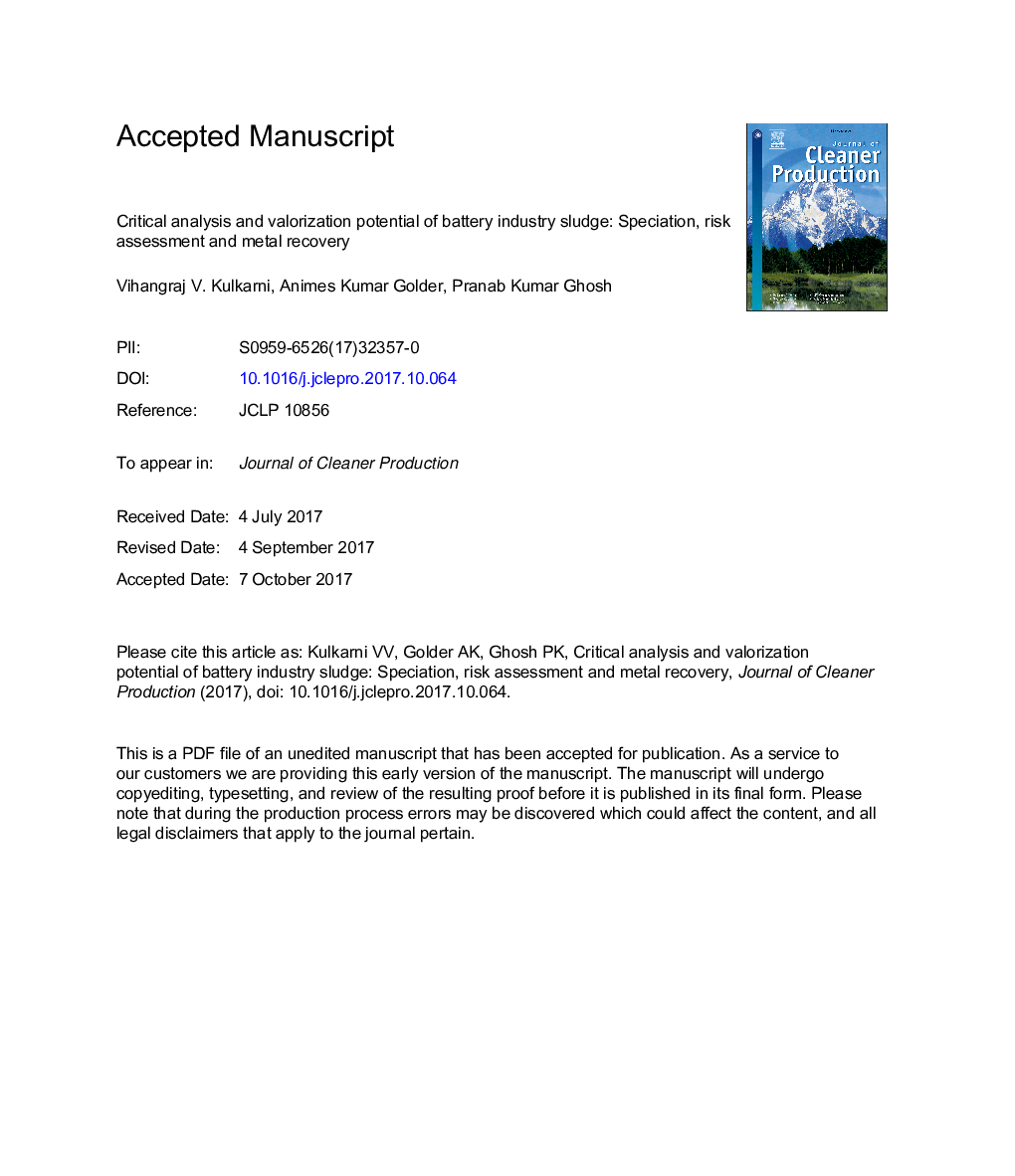| کد مقاله | کد نشریه | سال انتشار | مقاله انگلیسی | نسخه تمام متن |
|---|---|---|---|---|
| 8100273 | 1522082 | 2018 | 33 صفحه PDF | دانلود رایگان |
عنوان انگلیسی مقاله ISI
Critical analysis and valorization potential of battery industry sludge: Speciation, risk assessment and metal recovery
ترجمه فارسی عنوان
تجزیه و تحلیل بحران و پتانسیل ارزش گذاری لجن باتری صنعت: ارزیابی، ارزیابی خطر و بازیابی فلز
دانلود مقاله + سفارش ترجمه
دانلود مقاله ISI انگلیسی
رایگان برای ایرانیان
موضوعات مرتبط
مهندسی و علوم پایه
مهندسی انرژی
انرژی های تجدید پذیر، توسعه پایدار و محیط زیست
چکیده انگلیسی
Lime treated battery wastewater sludge (BWS) was collected, characterized to assess the heavy metal fractions, safe disposal potential, and possible valorization through the Community Bureau of Reference (BCR) scheme, Toxicity Characteristic Leaching Procedure (TCLP), diethylenetriaminepentaacetic acid (DTPA) test, risk assessment, and progressive acidification. In the first place, BWS was found to be a potential building material for construction, fortified by spectroscopic studies. Total metal analysis showed that the BWS was highly contaminated with Pb, Fe, Zn, Cu, and Cd with concentration of 8322 ± 11, 15721 ± 21, 310 ± 2, 175 ± 4, and 1215 ± 7 mg/kg, respectively. Physical segregation of BWS particles in <10, 10-45, 45-75, and >75 μm size showed that the heavy metals were more concentrated in the finer fractions and, only 5% were present in coarse fraction. BCR extractions showed that the order of prominence in the exchangeable fraction was as Al > Ca > Cu > Ni > Zn > Mn > Mg > Co > Pb > Cd > Fe, whereas, Fe, Mn, and Zn were abundant in the reducible fraction. Pb (67%) and Cu (55%) showed the highest percentage in the oxidizable fraction and, Mg and Zn were mostly present in the residual form. The TCLP concentrations for Pb and Cd exceeded the prescribed standards and toxicity indices classified BWS as a hazardous waste with very high-risk for land disposal. Valorization of sludge was conducted through progressive acidification using five different acids. Citric acid showed the best metal recovery potential of 47, 77, 60, 19, 58, 59, 67, 41, and 51% for Pb, Fe, Cu, Cd, Ni, Mn, Al, Co, and Zn but the kinetics of metals leaching was slow. H2O2 further improved metal recovery mobilizing organically bound metals mediated through the formation of HO
- radicals.
- radicals.
ناشر
Database: Elsevier - ScienceDirect (ساینس دایرکت)
Journal: Journal of Cleaner Production - Volume 171, 10 January 2018, Pages 820-830
Journal: Journal of Cleaner Production - Volume 171, 10 January 2018, Pages 820-830
نویسندگان
Vihangraj V. Kulkarni, Animes Kumar Golder, Pranab Kumar Ghosh,
